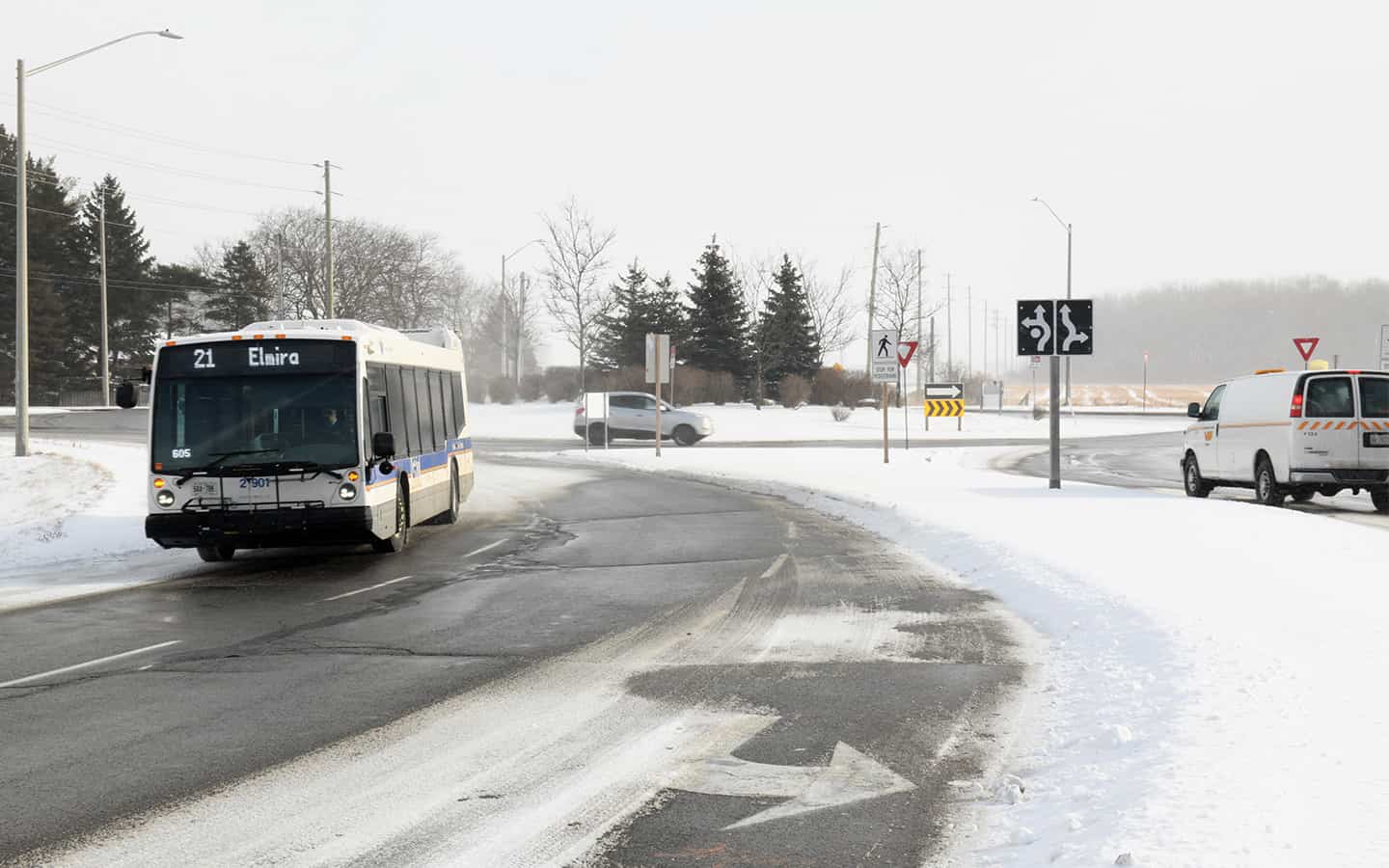A four-lane route connecting Elmira to Waterloo could be decades away, but the Region of Waterloo will be starting the process this year. Or at least looking into it, at any rate.
The new transportation master plan, which recently wrapped up a public consultation phase, includes the widening of Arthur Street between Elmira and Highway 85. Also discussed is a bypass route around downtown of Elmira, though that project remains outside the 2041 scope of the new plan.
The document envisions the widening of Arthur Street to four lanes between Highway 85 and the Sawmill Road roundabout by 2031, while the stretch from the roundabout to Listowel Road would be widened in the 2031-41 timeline.
While work on the road project isn’t imminent, it is slated for discussion this year, along with plans for the first step – and environmental assessment – to begin in 2021, said Steve van De Keere, who was the project director of the region’s transportation master plan (TMP).
As with the previous TMP from 2010, the new document focuses on transit and so-called active transportation – walking and cycling. There are also plans for new roads, road widening and, in some cases, lane reductions to accommodate bicycles. Of the $666 million in capital spending forecast through 2031, $247 million is earmarked for transit, $120 million for active transportation and $299 million for roads.
In the 2031-41 period, a further $609 million in spending breaks down to $271 million for transit, $50 million for active modes and $288 million in road costs.
That’s $1.275 billion over the course of the TMP’s study period, though van De Keere notes the document is “always evolving,” with projects subject to the annual budget process and shifting priorities.
Most of the transit and active transportation spending will be in the cities. In that vein, the region is coordinating with Waterloo, Kitchener and Cambridge, he said.
In Woolwich, the emphasis is on relieving congestion on the corridor to Waterloo, with traffic pressures growing along with population in Elmira.
While planning is underway, there won’t be any new pavement for several years at a minimum. If the environmental assessment gets underway in 2021, the process takes a couple of years. From that point, it’s at least five to seven years before a project is completed, van De Keere explained.
The TMP timelines, which aren’t set in stone, could see the widening put off for two decades. The project is further complicated by the need to cross the Conestogo river. The current bridge isn’t a good candidate for expansion, said van De Keere, so the structure would have to be twinned at no small expense.
The region will have a better handle on timing when the environmental assessment is done, says Woolwich Mayor Sandy Shantz, who represents the township on regional council.
“The EA should provide us a clearer picture, and help us look at what the options are,” she said, noting priorities can’t be set until the scope of the work is determined.
With a plan focused away from road projects, the townships will have to push for improvements on their roads.
“Active transportation is important, but that’s more in the cities. In the townships, vehicles are still going to be needed,” she said, noting people still have to get into the cities even as more of them move farther afield to find affordable housing.
In the meantime, the region expects to carry out some improvements at the Arthur Street and Sawmill Road intersection by extending the two-lane entrances and exits at the roundabout.
“That’s a first step to improvements of the corridor,” he said. “We hope to reduce some of the congestion.”
The bypass route that would take through-traffic, particularly trucks, off of Elmira’s main street will be part of the EA study, but remains outside the scope of current projects.
“Bypasses are interesting projects because some people want them, and other people don’t,” said van De Keere, noting that the routes take more than trucks out of the core.
Timing, especially for projects years down the road, remains something of a guesstimate. Van De Keere notes the transportation master plan is an evolving document, updated every five years and subject to each year’s budget priorities.
“Things are changing faster than they used to,” he said, adding costs will be a big issue for council to discuss at budget time.
“There’s definitely a concern about the cost of some of these projects.”
Getting funding for projects in the townships will be a matter of getting other councillors onboard, says Shantz.
“I try to get it in front of them,” she said, noting every municipality has its own priority.
“All we can do is make our needs known.”









